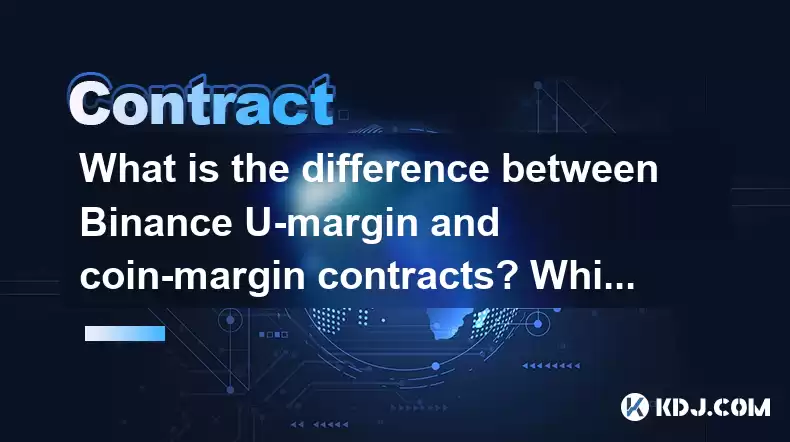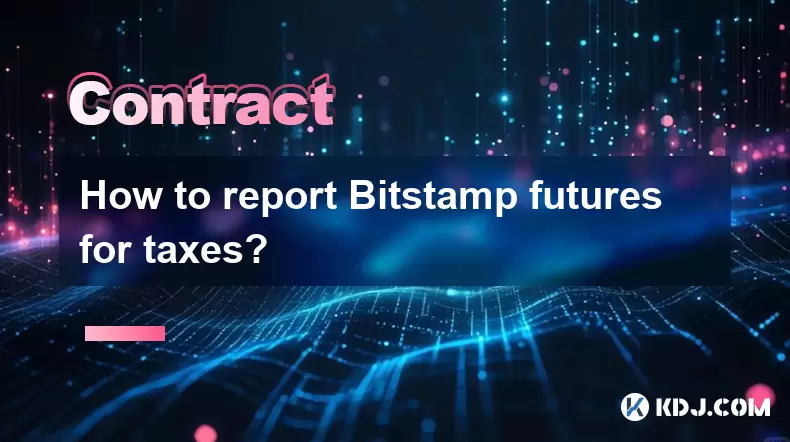-
 Bitcoin
Bitcoin $114400
0.68% -
 Ethereum
Ethereum $3550
2.48% -
 XRP
XRP $3.001
4.99% -
 Tether USDt
Tether USDt $0.9999
0.01% -
 BNB
BNB $757.6
1.46% -
 Solana
Solana $162.9
1.07% -
 USDC
USDC $0.9998
0.00% -
 TRON
TRON $0.3294
0.91% -
 Dogecoin
Dogecoin $0.2015
2.46% -
 Cardano
Cardano $0.7379
2.01% -
 Stellar
Stellar $0.4141
8.83% -
 Hyperliquid
Hyperliquid $37.83
-1.91% -
 Sui
Sui $3.454
0.76% -
 Chainlink
Chainlink $16.62
3.53% -
 Bitcoin Cash
Bitcoin Cash $554.6
2.84% -
 Hedera
Hedera $0.2486
3.91% -
 Ethena USDe
Ethena USDe $1.001
0.00% -
 Avalanche
Avalanche $21.95
3.34% -
 Toncoin
Toncoin $3.563
-2.85% -
 Litecoin
Litecoin $112.7
2.65% -
 UNUS SED LEO
UNUS SED LEO $8.977
0.13% -
 Shiba Inu
Shiba Inu $0.00001232
1.85% -
 Uniswap
Uniswap $9.319
2.93% -
 Polkadot
Polkadot $3.632
1.38% -
 Monero
Monero $307.2
2.36% -
 Dai
Dai $0.9997
-0.03% -
 Bitget Token
Bitget Token $4.340
0.91% -
 Pepe
Pepe $0.00001048
1.07% -
 Cronos
Cronos $0.1348
3.26% -
 Aave
Aave $261.5
1.93%
What is the difference between Binance U-margin and coin-margin contracts? Which one should I choose?
Binance offers U-margin contracts in USD and coin-margin contracts in crypto, each suited for different trading goals and risk levels. Choose based on your strategy and market outlook.
Apr 27, 2025 at 07:01 pm

The world of cryptocurrency trading offers various financial instruments to cater to different trading preferences and risk profiles. Among these, Binance, one of the leading cryptocurrency exchanges, provides two types of margin contracts: U-margin (USD-margined) and coin-margined contracts. Understanding the differences between these two can help traders make informed decisions based on their trading goals and strategies.
What are U-margin Contracts?
U-margin contracts, also known as USD-margined contracts, are futures contracts where the margin and profit/loss are denominated in USD. This means that regardless of the underlying asset you are trading, your margin account is maintained in USD, and any profits or losses you incur will be reflected in USD.
- Margin and Settlement in USD: When you trade U-margin contracts, you deposit USD as margin, and any profits or losses are settled in USD. This can be advantageous for traders who prefer to manage their funds in a stable currency like the USD.
- Broader Market Exposure: U-margin contracts allow traders to speculate on the price movements of cryptocurrencies without needing to hold the actual cryptocurrencies. This can be useful for traders who want to hedge their positions or speculate on market movements without owning the underlying asset.
- Leverage: U-margin contracts typically offer leverage, allowing traders to amplify their exposure to the market. However, this also increases the potential for both gains and losses.
What are Coin-margin Contracts?
Coin-margin contracts are futures contracts where the margin and profit/loss are denominated in the underlying cryptocurrency. This means that if you are trading a Bitcoin (BTC) futures contract, your margin and any profits or losses will be in BTC.
- Margin and Settlement in Cryptocurrency: When trading coin-margin contracts, you deposit the underlying cryptocurrency as margin. Any profits or losses you incur will be settled in the same cryptocurrency. This can be beneficial for traders who want to maintain their exposure to the cryptocurrency market without converting to USD.
- Direct Exposure to Cryptocurrency: Coin-margin contracts provide direct exposure to the underlying cryptocurrency, which can be advantageous for traders who believe in the long-term value of the cryptocurrency they are trading.
- Leverage: Similar to U-margin contracts, coin-margin contracts also offer leverage, allowing traders to increase their exposure to the market. However, this leverage comes with increased risk.
Key Differences Between U-margin and Coin-margin Contracts
Understanding the key differences between U-margin and coin-margin contracts is crucial for making an informed trading decision. Here are the main distinctions:
- Currency of Margin and Settlement: The most significant difference is the currency used for margin and settlement. U-margin contracts use USD, while coin-margin contracts use the underlying cryptocurrency.
- Exposure to Cryptocurrency: U-margin contracts provide indirect exposure to cryptocurrencies through USD, while coin-margin contracts offer direct exposure to the underlying cryptocurrency.
- Risk and Reward: Both types of contracts offer leverage, but the nature of the risk and reward differs. U-margin contracts may be less volatile due to the stability of USD, while coin-margin contracts can be more volatile due to the inherent volatility of cryptocurrencies.
Which One Should You Choose?
Choosing between U-margin and coin-margin contracts depends on your trading goals, risk tolerance, and market outlook. Here are some factors to consider:
- Trading Goals: If your primary goal is to speculate on the price movements of cryptocurrencies without holding the actual assets, U-margin contracts might be more suitable. If you believe in the long-term value of a specific cryptocurrency and want to maintain direct exposure, coin-margin contracts could be a better choice.
- Risk Tolerance: U-margin contracts may offer a more stable trading environment due to the use of USD, which can be less volatile than cryptocurrencies. If you have a lower risk tolerance, U-margin contracts might be preferable. Coin-margin contracts, on the other hand, can be more suitable for traders with a higher risk tolerance who are comfortable with the volatility of cryptocurrencies.
- Market Outlook: Your outlook on the cryptocurrency market can also influence your choice. If you anticipate significant price movements in a particular cryptocurrency, coin-margin contracts might allow you to capitalize on these movements more effectively. If you prefer to hedge against market volatility with a stable currency, U-margin contracts could be more appropriate.
Practical Considerations for Trading
When deciding between U-margin and coin-margin contracts, it's essential to consider practical aspects of trading on Binance. Here are some steps to get started with either type of contract:
- Open a Binance Account: If you don't already have a Binance account, you'll need to create one. Visit the Binance website, click on "Register," and follow the prompts to set up your account.
- Verify Your Account: To access margin trading, you'll need to complete the identity verification process. Navigate to the "User Center" on Binance, select "Identification," and follow the instructions to submit the required documents.
- Deposit Funds: Depending on the type of contract you want to trade, you'll need to deposit either USD (for U-margin contracts) or the relevant cryptocurrency (for coin-margin contracts). Go to the "Wallet" section, select "Deposit," and choose the appropriate currency.
- Navigate to Futures Trading: Once your account is funded, go to the "Derivatives" section on Binance and select "Futures." From there, you can choose between USD-margined and coin-margined contracts.
- Select a Contract: Choose the specific futures contract you want to trade. For U-margin contracts, you'll see contracts listed in USD, while coin-margin contracts will be listed in the underlying cryptocurrency.
- Set Up Your Trade: Decide on your position size, leverage, and entry and exit points. Use the trading interface to place your order, whether it's a market order, limit order, or stop order.
- Monitor and Manage Your Position: Keep an eye on your open positions and be prepared to adjust your strategy as market conditions change. Use stop-loss and take-profit orders to manage risk.
Frequently Asked Questions
Q1: Can I switch between U-margin and coin-margin contracts on Binance?
A1: Yes, you can switch between U-margin and coin-margin contracts on Binance. However, you'll need to ensure that you have the appropriate funds in your account. To switch, simply navigate to the futures trading section and select the type of contract you want to trade.
Q2: Are there any fees associated with trading U-margin and coin-margin contracts?
A2: Yes, Binance charges fees for trading both U-margin and coin-margin contracts. The fee structure can vary based on your trading volume and whether you are a maker or taker in the trade. It's important to review the fee schedule on the Binance website to understand the costs involved.
Q3: Can I use the same account for both U-margin and coin-margin contracts?
A3: Yes, you can use the same Binance account to trade both U-margin and coin-margin contracts. However, you'll need to manage your funds separately for each type of contract, as U-margin contracts require USD, while coin-margin contracts require the underlying cryptocurrency.
Q4: How does leverage work in U-margin and coin-margin contracts?
A4: Leverage in both U-margin and coin-margin contracts allows you to control a larger position with a smaller amount of capital. For example, if you use 10x leverage, you can control a position worth 10 times your initial margin. However, leverage amplifies both potential gains and losses, so it's crucial to use it cautiously and understand the risks involved.
Disclaimer:info@kdj.com
The information provided is not trading advice. kdj.com does not assume any responsibility for any investments made based on the information provided in this article. Cryptocurrencies are highly volatile and it is highly recommended that you invest with caution after thorough research!
If you believe that the content used on this website infringes your copyright, please contact us immediately (info@kdj.com) and we will delete it promptly.
- Cryptocurrency, Altcoins, and Profit Potential: Navigating the Wild West
- 2025-08-04 14:50:11
- Blue Gold & Crypto: Investing Disruption in Precious Metals
- 2025-08-04 14:30:11
- Japan, Metaplanet, and Bitcoin Acquisition: A New Era of Corporate Treasury?
- 2025-08-04 14:30:11
- Coinbase's Buy Rating & Bitcoin's Bold Future: A Canaccord Genuity Perspective
- 2025-08-04 14:50:11
- Coinbase's Buy Rating Maintained by Rosenblatt Securities: A Deep Dive
- 2025-08-04 14:55:11
- Cryptos, Strategic Choices, High Returns: Navigating the Meme Coin Mania
- 2025-08-04 14:55:11
Related knowledge

Why is my Bitstamp futures position being liquidated?
Jul 23,2025 at 11:08am
Understanding Futures Liquidation on BitstampFutures trading on Bitstamp involves borrowing funds to open leveraged positions, which amplifies both po...

How to report Bitstamp futures for taxes?
Jul 30,2025 at 08:35am
Understanding Bitstamp Futures and Taxable EventsWhen trading Bitstamp futures, it’s essential to recognize that these financial instruments are treat...

Does Bitstamp offer inverse contracts?
Jul 23,2025 at 01:28pm
Understanding Inverse Contracts in Cryptocurrency TradingIn the realm of cryptocurrency derivatives, inverse contracts are a specific type of futures ...

What is the difference between futures and perpetuals on Bitstamp?
Jul 27,2025 at 05:08am
Understanding Futures Contracts on BitstampFutures contracts on Bitstamp are financial derivatives that allow traders to speculate on the future price...

How to find your Bitstamp futures trade history?
Jul 23,2025 at 08:07am
Understanding Bitstamp and Futures Trading AvailabilityAs of the current state of Bitstamp’s service offerings, it is critical to clarify that Bitstam...

Can I use a trailing stop on Bitstamp futures?
Jul 23,2025 at 01:42pm
Understanding Trailing Stops in Cryptocurrency TradingA trailing stop is a dynamic type of stop-loss order that adjusts automatically as the price of ...

Why is my Bitstamp futures position being liquidated?
Jul 23,2025 at 11:08am
Understanding Futures Liquidation on BitstampFutures trading on Bitstamp involves borrowing funds to open leveraged positions, which amplifies both po...

How to report Bitstamp futures for taxes?
Jul 30,2025 at 08:35am
Understanding Bitstamp Futures and Taxable EventsWhen trading Bitstamp futures, it’s essential to recognize that these financial instruments are treat...

Does Bitstamp offer inverse contracts?
Jul 23,2025 at 01:28pm
Understanding Inverse Contracts in Cryptocurrency TradingIn the realm of cryptocurrency derivatives, inverse contracts are a specific type of futures ...

What is the difference between futures and perpetuals on Bitstamp?
Jul 27,2025 at 05:08am
Understanding Futures Contracts on BitstampFutures contracts on Bitstamp are financial derivatives that allow traders to speculate on the future price...

How to find your Bitstamp futures trade history?
Jul 23,2025 at 08:07am
Understanding Bitstamp and Futures Trading AvailabilityAs of the current state of Bitstamp’s service offerings, it is critical to clarify that Bitstam...

Can I use a trailing stop on Bitstamp futures?
Jul 23,2025 at 01:42pm
Understanding Trailing Stops in Cryptocurrency TradingA trailing stop is a dynamic type of stop-loss order that adjusts automatically as the price of ...
See all articles

























































































